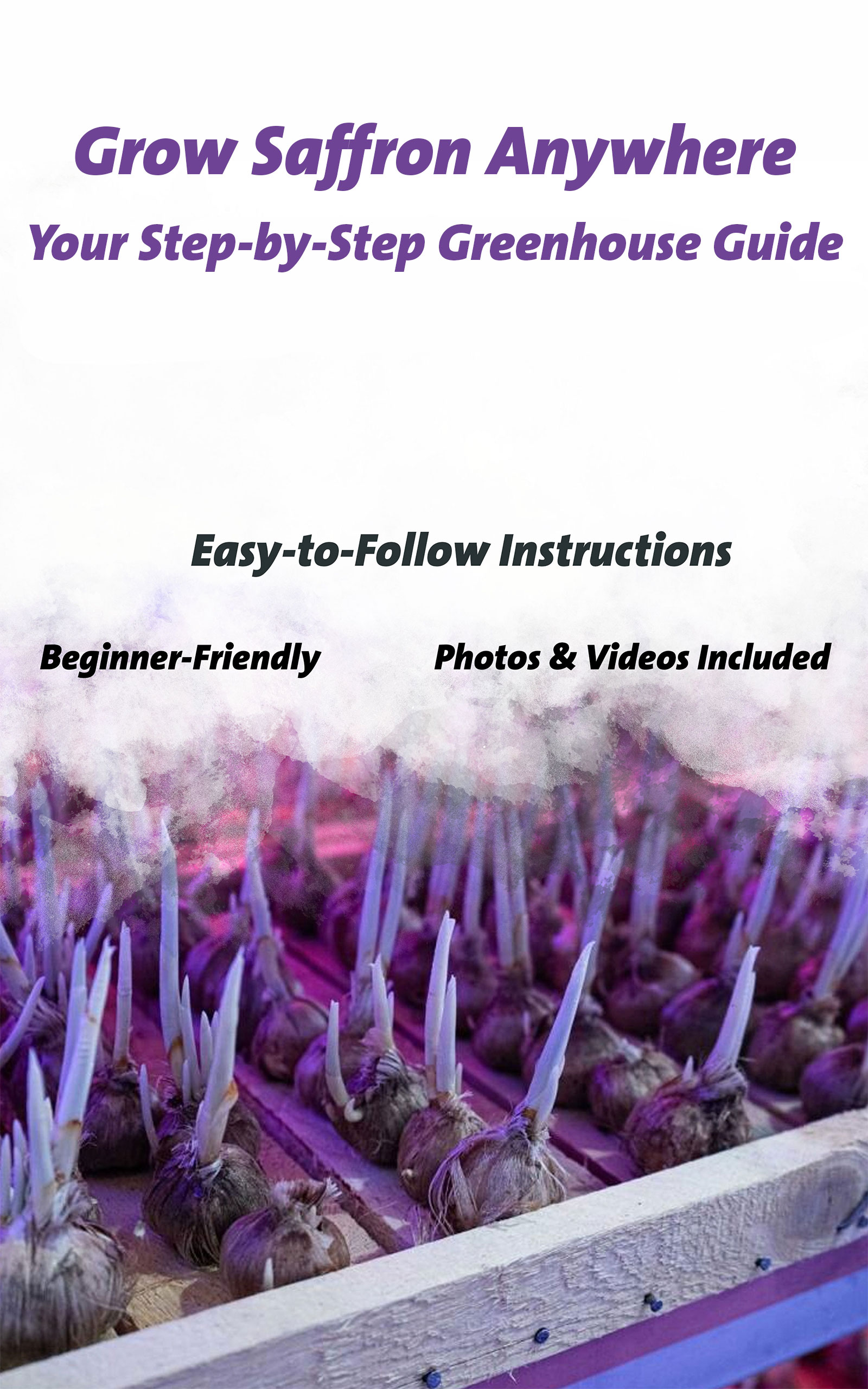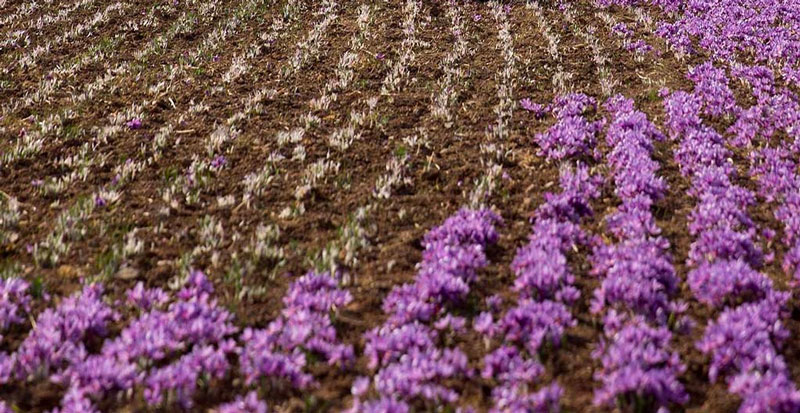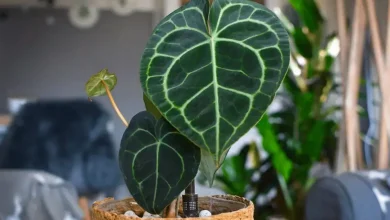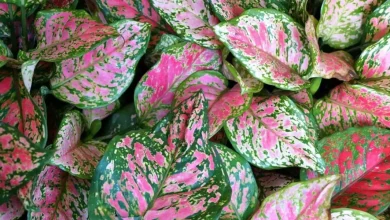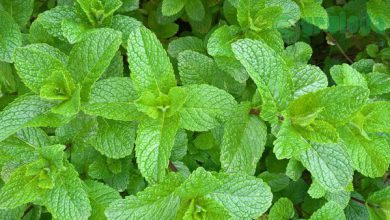Bird of Paradise Plant Care: Growing & Caring for Strelitzia Indoors

Introduction to Growing Bird of Paradise
With its vibrant tropical blooms and bold architectural foliage, it’s easy to see why the Bird of Paradise plant remains so popular. This eye-catching flower makes aliving statement wherever it’s grown! While not the easiest houseplant for beginners, Bird of Paradise can thrive indoors with proper care. Read on to learn how to grow a healthy, flowering Strelitzia plant.
Bird of Paradise Plant Indoors
Bird of Paradise refers to a genus of flowering plants called Strelitzia, native to South Africa. Of the five species, Strelitzia reginae is the classic outdoor palm tree-like plant most recognized as “Bird of Paradise”. But other varieties are also gaining popularity as dramatic houseplants that flower indoors.
Strelitzia are prized for their stiff, banana-like leaves and stunning flowers that emerge from stout beak-shaped bracts. Giant bird-like blooms in shades of orange, blue, and white give Bird of Paradise its fitting common name. These plants grow up to 6 feet tall when happy.
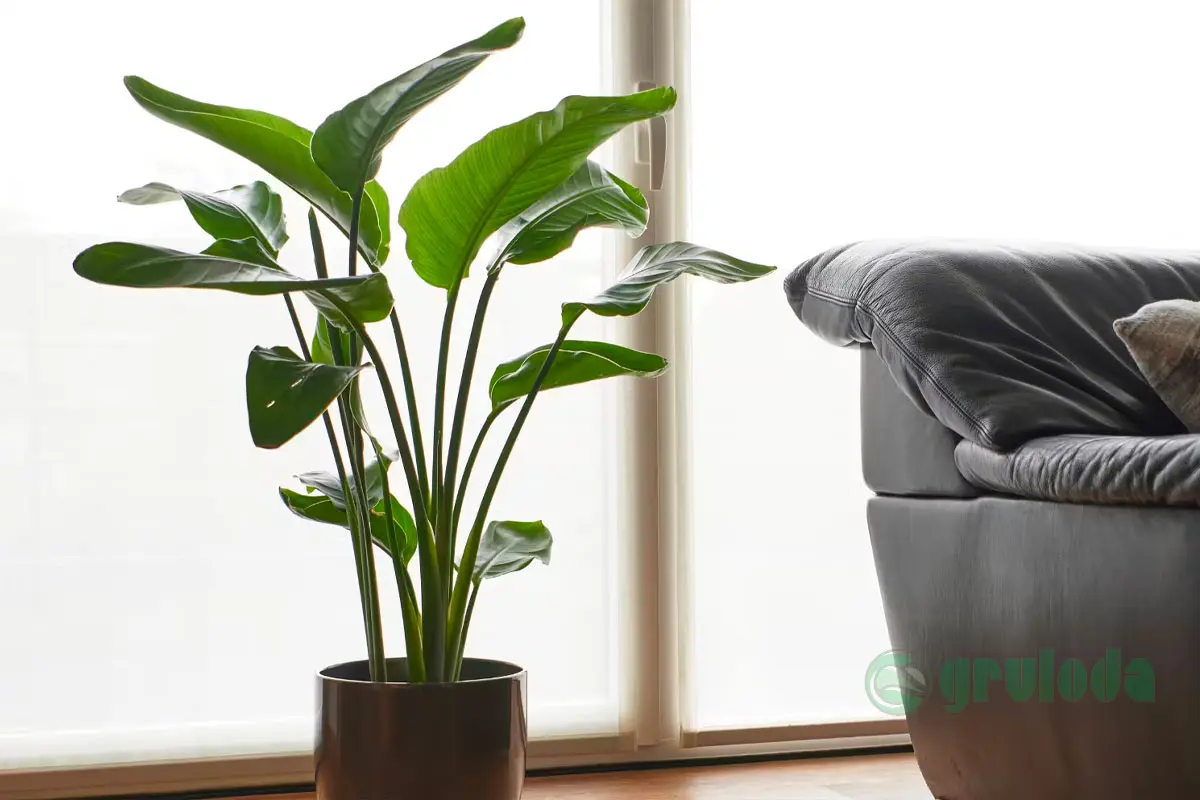
Natural Habitat & Origins
Bird of Paradise plants are native to South Africa, where they grow in warm subtropical climates in rocky coastal bush and scrub. Most varieties originate from regions with mild winters, moderate rainfall, and humid summers. Providing similar conditions helps them thrive as houseplants.
Providing Ideal Growing Conditions
While fairly adaptable, indoor Bird of Paradise does best when given conditions mimicking its preferred warm, bright habitat:
Bird of Paradise plant indoor light requirements
Bird of Paradise needs very bright light to flower and grow well. Place it in a south or west facing window for as much direct sun as possible. Supplement with grow lights if indoor light is inadequate.
Temperature & Humidity
This plant prefers warm temperatures between 65-75°F during the day and 60-65°F at night. Average indoor humidity around 40-50% is sufficient if you keep the soil moist. Avoid drafty locations.
Soil Needs
Use a rich, well-draining potting mix amended with compost, peat moss or bark chips to retain moisture while allowing excess water to flow through easily. Proper soil drainage prevents root rot.
Watering Frequency
Water when the top inch or two of soil becomes dry. Bird of Paradise prefers consistently moist but not soggy soil. Drooping leaves indicate under-watering. Never allow it to completely dry out.
Indoor Bird of Paradise Care
With the right growing conditions met, a few easy care practices will keep your Strelitzia thriving happily:
Fertilizing
Feed monthly through the growing season with a balanced liquid fertilizer, diluted by half. Reduce to every 6-8 weeks in winter when growth slows. Watch for signs of fertilizer burn on leaf tips.
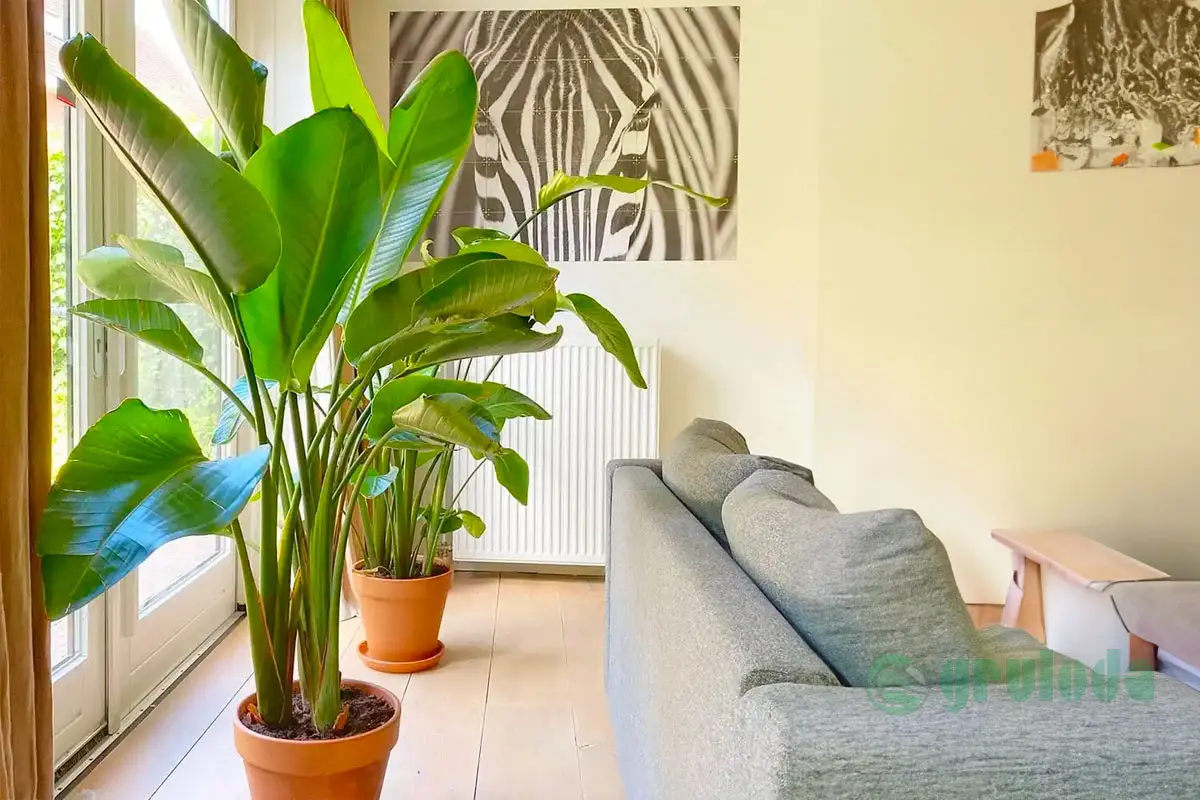
Repotting Mature Plants
Repot in the spring every other year or so in a container just slightly larger than the current pot. Use fresh indoor potting soil and gently loosen compacted roots before repotting. Handle the plant carefully to avoid damage.
Pruning for Shaping
Remove dead or damaged leaves and spent flower stems to maintain an attractive look. You can also prune back overgrown leaves and stems to shape the plant and direct growth.
Propagating New Plants
Propagate from seed or division for new Bird of Paradise plants. Seeds take some patience but are rewarding! Divide and replant mature rhizome offsets from the parent plant in spring.
Achieving Optimal Growth
Get your Bird of Paradise to thrive using these extra care tips:
Supplementing with Grow Lights
Provide full spectrum grow lights if your windows lack adequate bright light for flowering and robust growth. Light is crucial for Bird of Paradise!
Providing Support for Floppy Stems
Sturdy stakes help support the tall, heavy leaves which eventually cause stems to flop over. Use soft ties to gently attach stems to stakes without damage.
Managing Mealybugs & Other Pests
Watch for common pests like mealybugs, spider mites, and scales which can infest the waxy leaves. Wipe with neem oil or insecticidal soap to treat quickly before infestations spread.
Keeping the Foliage Clean
Gently wipe leaves periodically with a damp soft cloth to remove dust buildup and allow maximum light absorption for plant growth. Monitor closely for pests while cleaning.
Troubleshooting Common Problems
Be watchful for these issues and take corrective care as needed:
Leaves Curling Inward
Low humidity causes the leaves to dry out and curl inward at the edges as the plant loses moisture. Increase humidity around your Bird of Paradise.
Leaf Tips Turning Brown
Dry air, fertilizer problems, or salt buildup in soil can cause unsightly brown crispy leaf tips. Provide more humidity, reduce fertilizer, and flush soil as needed.
Failure to Bloom
Inadequate light, improper temperatures, or over-fertilization may prevent flowering. Ensure bright light, moderate feeding, and ideal growing temps to encourage blooms.
Leaves Turning Yellow or Wilting
Both overwatering and underwatering can lead to yellowing or drooping leaves. Check soil moisture and adjust your watering practices accordingly.
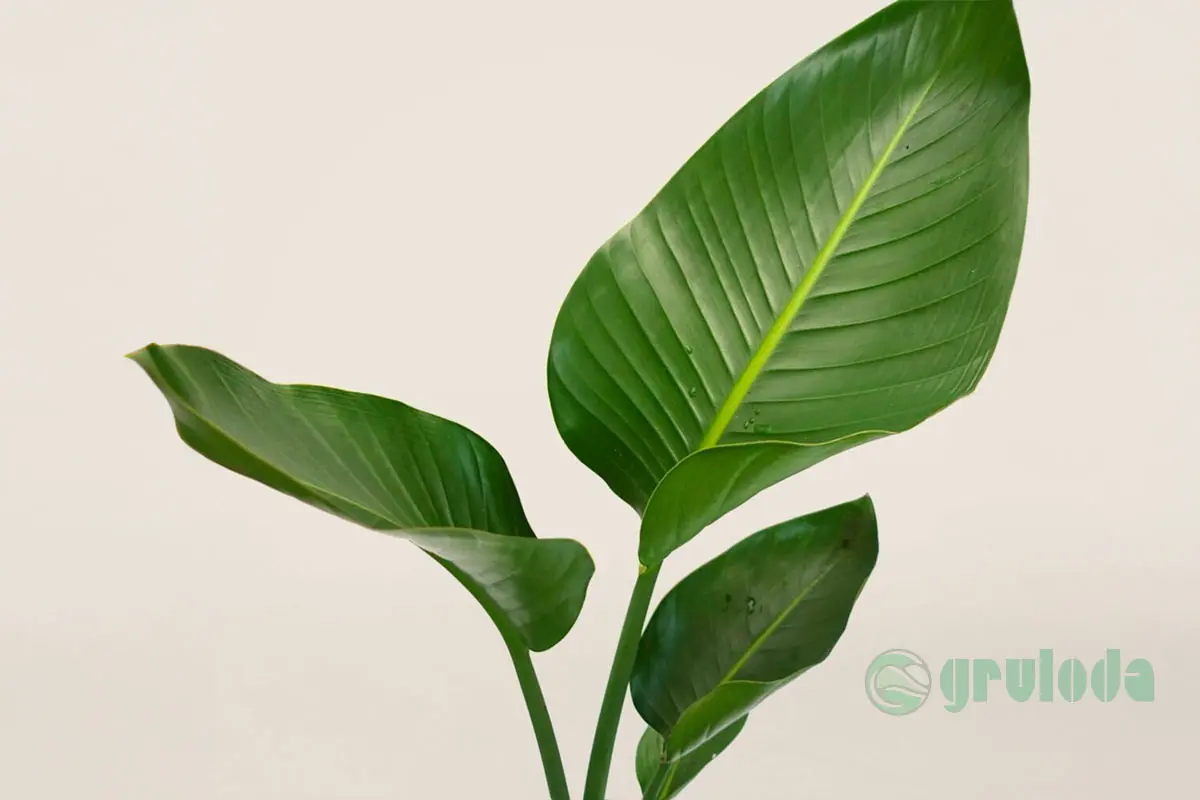
Bird of Paradise plants in outdoor environments
- Site bird of paradise in full sun to partial shade. They thrive in bright light conditions. Provide at least 6 hours of direct sunlight per day.
- Plant in well-draining soil. Amend clay-heavy soil with compost or peat moss to improve drainage. Proper drainage prevents root rot.
- Water bird of paradise deeply whenever the top few inches of soil become dry. Established plants are quite drought tolerant but grow best with regular water.
- Apply a balanced fertilizer monthly during the active growing season of spring through fall. Slow release fertilizer also works well.
- Protect plants from frost and freezing temps by covering or moving pots into a sheltered area. Temps below 30°F damage leaves.
- Prune off any dead, damaged, or yellow foliage and spent flower stems to keep plants looking their best. You can cut back overgrown bird of paradise plant leaves as needed.
- Watch for pests like scale, mealybugs and spider mites. Wipe leaves with neem oil or insecticidal soap sprays to control infestations.
- Bring potted plants indoors or move to a sheltered spot outdoors before temps drop below 40°F in fall and winter. They thrive best in warmer conditions.
- Propagate new bird of paradise plants from seed or by dividing mature plants at the roots in spring. Replant offsets or rhizomes.
With the right care, bird of paradise plants can add incredibly unique, tropical flair to outdoor garden beds or patios!
Bird of Paradise plant indoor care
Here are some helpful tips for caring for Bird of Paradise plants indoors:
- Lighting is key – Bird of Paradise thrives in very bright light. Provide at least 4-6 hours of direct sunlight if possible. Supplement with grow lights if needed.
- Warm temperatures between 65-75°F are ideal during the day, around 60-65°F at night. Avoid drafty spots.
- Humidity around 40-50% is sufficient if you keep the soil consistently moist. Use a humidifier or pebble tray to increase humidity.
- Use a rich, well-draining potting mix. Amend soil with compost, peat moss, or bark chips to retain moisture while allowing drainage.
- Water when the top 1-2 inches of soil become dry. Drooping leaves indicate under-watering. Don’t allow it to completely dry out.
- Fertilize monthly in spring through fall with a balanced liquid fertilizer diluted by half. Reduce to every 6-8 weeks in winter.
- Support the heavy leaves by staking or ties to prevent toppling. As plants mature, the large leaves become quite heavy.
- Prune off dead leaves or spent flower stems to maintain an attractive look. Wipe dust from leaves periodically.
- Repot every 2 years in spring in a slightly larger container. Ensure excellent drainage. Handle the plant gently to avoid root damage.
- Propagate new Bird of Paradise plants from seeds or division of mature plants. Patience is required for seed starting but yields rewarding results!
Conclusion
With striking tropical blooms and bold architectural foliage, it’s easy to appreciate the Bird of Paradise’s popularity as a houseplant! Provide very bright light, warm temperatures, decent humidity, fast-draining soil, and thorough watering when dry. A bit of fertilizing, pruning, and pest management keeps your Strelitzia houseplant flourishing. Enjoy its unique bird-like blooms!
Additional Bird of Paradise Plant Care Tips
Here are some extra pointers for successfully growing Bird of Paradise houseplants:
- Increase local humidity by misting leaves daily or placing pots on pebble trays. Proper humidity prevents leaf curling.
- Wipe leaves regularly with a soft damp cloth to keep dust free for optimal photosynthesis and to monitor closely for pests.
- Rotate the pot periodically to ensure even, upright growth towards light rather than becoming tilted or growing on just one side.
- Prune back any overgrown or spent leaves and flower stems to redirect energy towards healthy new growth and future blooms.
- Repot frequently while young to allow rapid root growth needed to support the mature plant. Gradually move only to slightly larger pots.
- Provide warm conditions year round, ideally with daytime highs around 70°F. Cooler temps below 55°F can damage leaves. Move away from drafty areas.
Troubleshooting Additional Issues
Why is my Bird of Paradise plant drooping or wilting?
Drooping leaves usually indicate under-watering. Check soil moisture and water thoroughly when the top inch or two becomes dry. Can also be caused by low humidity.
What causes yellow spots on the leaves of my Strelitzia?
Mineral deposits from tap water or damage from intense sunlight causes dry yellow leaf spots. Use filtered or distilled water and provide shade from hot afternoon sun.
How can I revive an overwatered Bird of Paradise?
Repot in fresh dry soil, evaluate root health, and discard any rotted roots. Allow the plant to fully dry out before watering again. Water much less frequently after correcting the issue.
Let me know if you have any other questions about successfully growing Bird of Paradise houseplants!
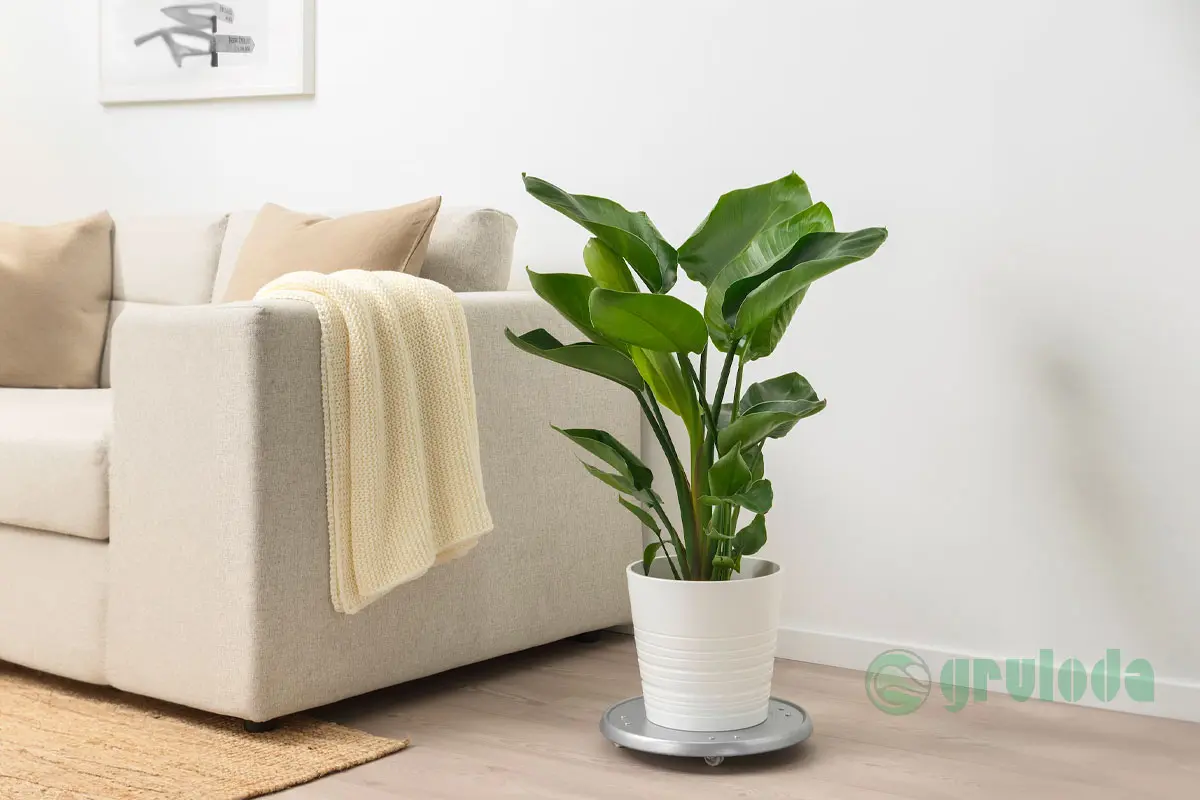
Frequently Asked Questions
How much light does Bird of Paradise need?
Very bright light, ideally 4-6 hours of direct sun, is crucial for good growth and flowering. Supplement with grow lights if needed.
What temperature is best for Bird of Paradise?
Daytime temperatures of 65-75°F and 60-65°F at night are ideal. Avoid excessive cold or heat. Cooler temps below 55°F can damage leaves.
Why is my Bird of Paradise getting brown leaf tips?
Dry air, fertilizer salt buildup, or fluoride in tap water commonly causes brown crispy leaf tips. Increase humidity, flush soil, and use filtered water.
How often should I water my indoor Bird of Paradise plant?
Water thoroughly whenever the top inch or two of soil becomes dry. Avoid allowing it to completely dry out. Drooping leaves indicate under-watering.
How do I encourage my Bird of Paradise to bloom indoors?
Provide very bright light, adequate warmth and humidity, moderate fertilizing, and well-draining soil to promote flowering. Removing pups may help direct energy to blooms.


